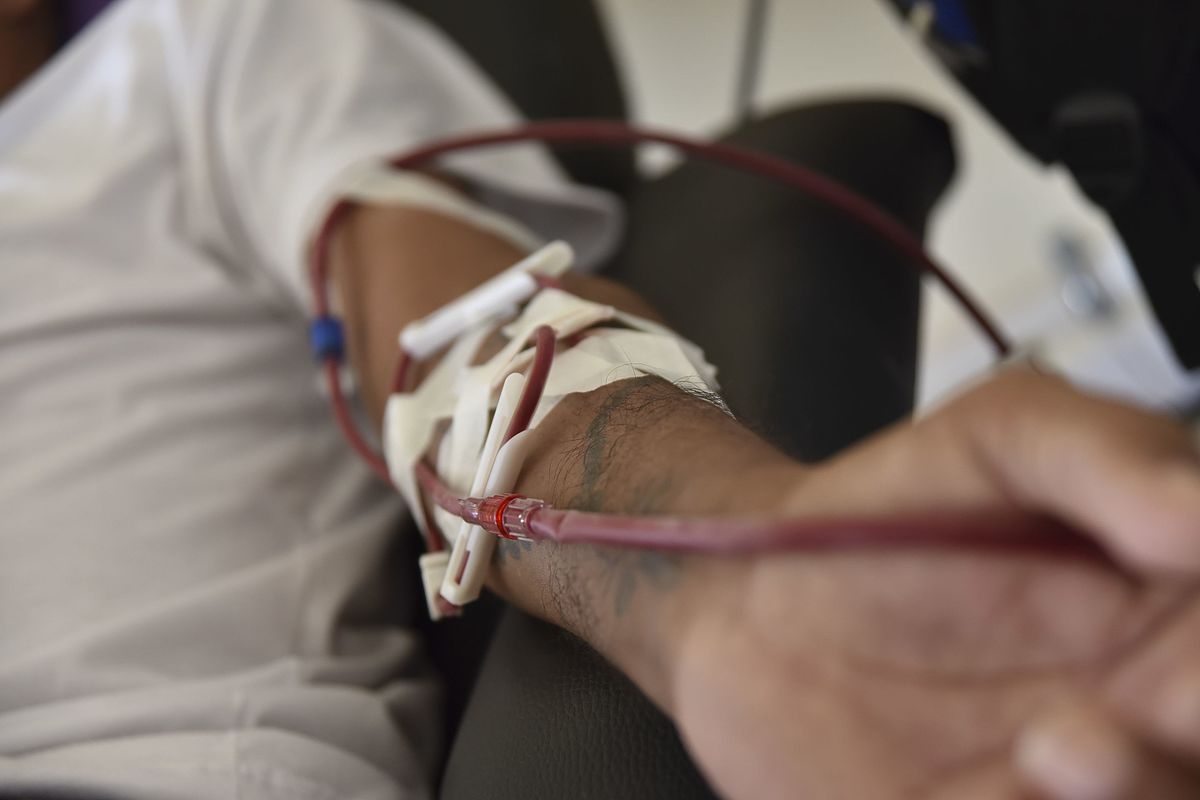I am doing everything to make this one last. I was dumb before. This is a second chance and I have to do it right this time. You know no one gets a third. I have a new job, I am finally getting back on my feet. So I have had to miss a few days. She says she understands, but I am not so sure.
The last few years had a rhythm to them. I was living with my kid and looking after my granddaughter during the day. He came back at three and I would go off to dialysis. I knew people there. I knew the nurses and the technicians. I knew a lot of the people hooked up to the machines, I also knew a lot of people who died as the machines could not keep them alive any longer. Those friendships were everything. They made me laugh in that sterile room, and drowned out the hum of the machines.
I meet Rosy there too, she was just starting. You could tell she was a newbie, she was using a line to get her dialysis. She hadn’t had the surgery yet. Dialysis took it out of her, she was bone tired at the end of the three hours — she didn’t talk to anyone for the first few months, just slept.
One day she got hooked up to the machine next to me. It used to be Lenny’s machine. He loved the TV on that bed. Lenny wasn’t coming anymore; he just got a new kidney. Rosy had her fistula by then, and she would close her eyes and clench up real tight when the nurse put the needles in to hook her up.
So we got to talking. You know me, I am a people person. She was from Tennessee, but had been here since her twenties. She was living with her daughter on the other side of town. She also had a grandkid, so we talked about them.
I came in early for the next session and convinced the technician to put Rosy next to me. He smiled. But he was my guy, so he made it happen.
Rosy and I became real close. We would meet up before dialysis and grab coffee. We went out to dinner after. Then we started meeting on our non-dialysis days. We took our grandkids to the park together. She was over for Christmas last year.
During that winter it was Rosy, Barbra and I who had all our sessions together. I had known Barbra for years. She was always on the bed across from me. It was right after New Year’s — Barbra wasn’t looking great that day. Her pressures dropped. The bells and alarms and lights on the machine were going off. They laid her flat on the bed and were thumping on her chest. The EMTs ran in and rushed her out. She died that night. The machine couldn’t keep her alive any longer.
After that I was afraid. I was afraid of going back there, afraid of getting hooked up to those machines. This death anxiety was draining all hope. So when I got the call last month I grabbed my bag, packed and ready for months, and ran to the hospital. Within ten hours I had a new kidney.
And you know doc, it has been great since. Y’all have put me on some crazy drugs, but I can handle it. I have my life back. You know doc, I am moving into my own new place next month.
Rosy is on the list, but it can be months to years before she gets a new kidney. She is still on her first fistula. I have two, and Lenny had three. I still try to go to some of her sessions, but lately not as much. Every time I go there, walking past Barbra’s bed gives me the shivers. I have been seeing less of Rosy outside dialysis as well.
I am trying to be good, doc. I am also trying to be good to her. But working in the kitchen six days a week takes it out of you. I am trying to eat right and exercise. I am making all of the appointments with the surgeons and the kidney docs and the diabetes docs and with you.
This is my second kidney. This is my second chance, and I know that I don’t get third.
Image source: Fotos produzidas pelo Senado by Senado Federal licensed under CC BY 2.0.


